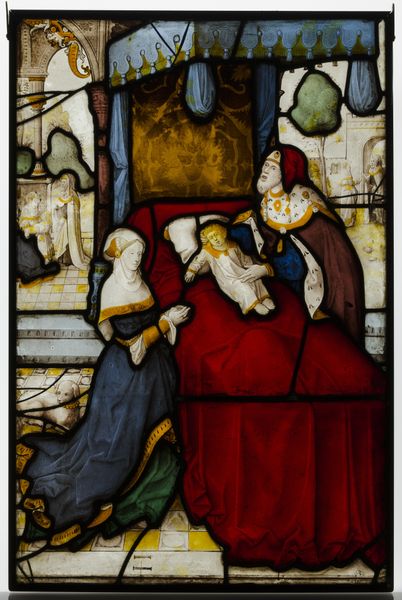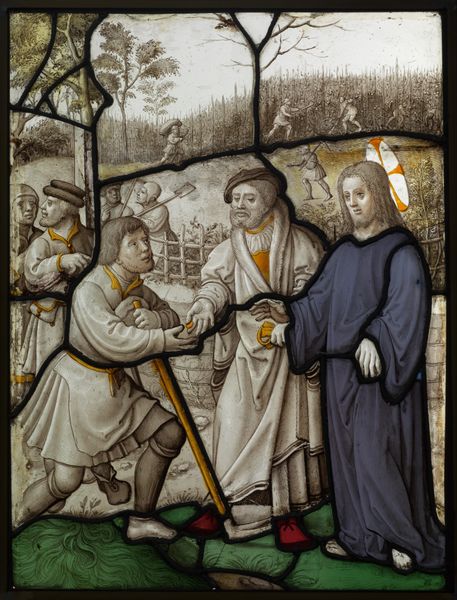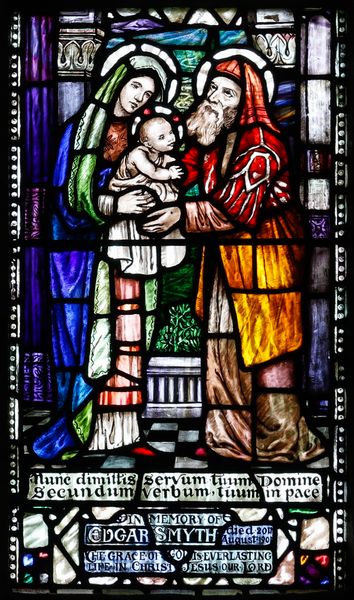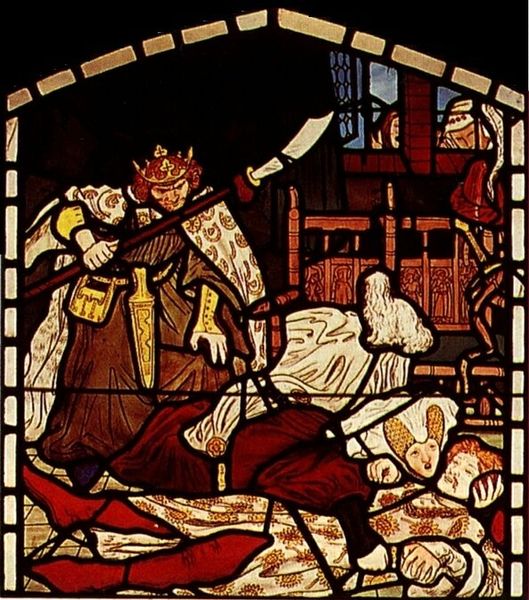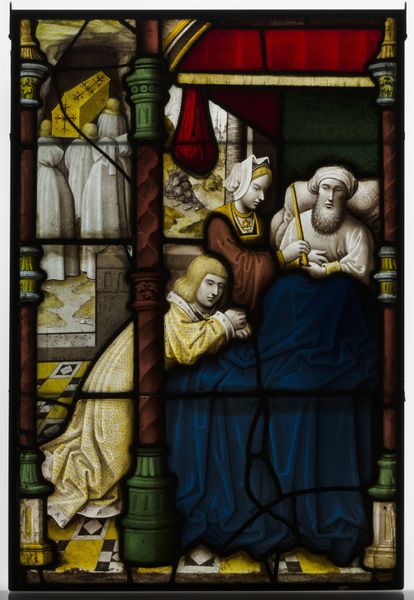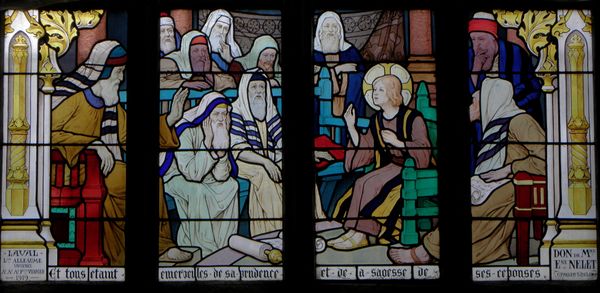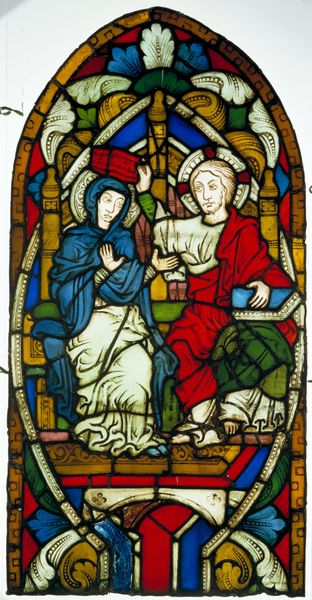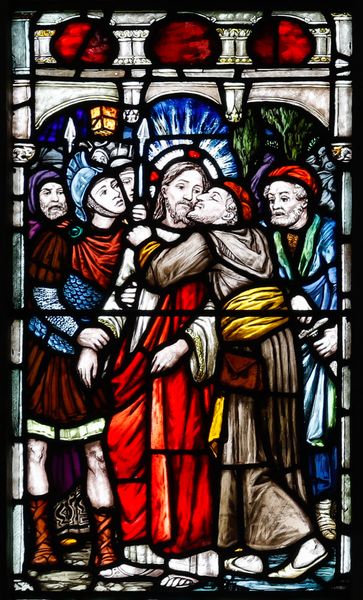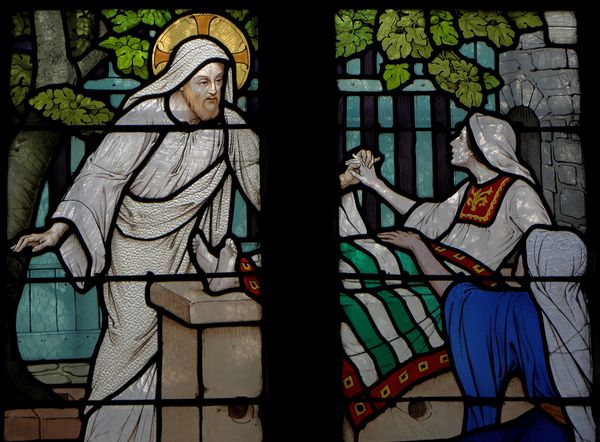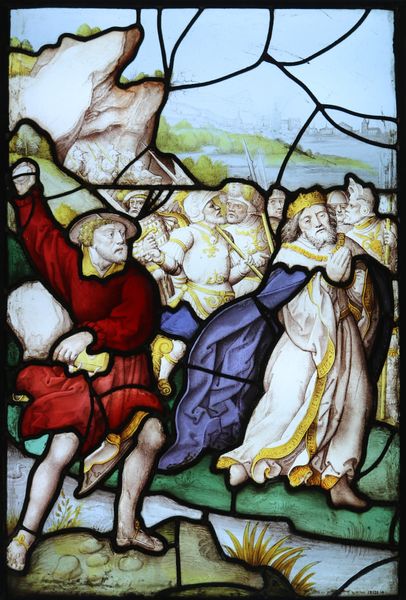
Copyright: Public domain
Curator: Edward Burne-Jones invites us to a medieval scene in "Wedding of Sir Tristram", dating from 1863. This narrative moment has been captured within what seems like a stained-glass design. It’s all very controlled but… warm, somehow. Editor: My initial impression is how subdued the palette is for a wedding. And for stained glass, I expected bolder hues, something a bit more celebratory. Instead, there's a real sense of restraint and sadness woven through this scene. Curator: Restraint is a very good way of putting it! Knowing Burne-Jones, it likely mirrors Tristram’s inner turmoil; his heart, as the story goes, belonged to Isolde of Ireland, not Isolde of Brittany, whom he's marrying here. Editor: Exactly. This image becomes less about the wedding itself and more about the internal struggle. The figures, especially the bride and groom, appear almost resigned, passive recipients of a fate they can’t control. I find the composition fascinating in terms of societal expectations. It raises issues of gender, duty, and freedom in marriage, particularly within courtly love traditions. Curator: Precisely. You can almost feel that tragic sense of inevitability hanging in the air. Burne-Jones did lean into symbolism. Notice the tight, almost claustrophobic framing. They’re trapped, not only by social expectation but also by this medium, a symbolic representation of fixed narratives and destinies, perhaps? It almost feels like an observation on the stories we tell and how they dictate life's course. Editor: I agree. The pre-Raphaelite movement was often concerned with escaping the industrial age. But they often returned to narratives that reinforced certain power structures, in a complicated twist. Burne-Jones simultaneously romanticizes the past, while using the subject to examine how these figures are imprisoned by narrative itself, by pre-scripted roles. The subdued color palette hints at a world-weariness beneath all the surface grandeur. Curator: Indeed. So, looking closely at the design and the medium it occupies reveals layers upon layers. Burne-Jones offers us a quiet revolution. Editor: It offers an image ripe for dissecting complex themes, rather than simple fairytale celebration. A melancholy meditation.
Comments
No comments
Be the first to comment and join the conversation on the ultimate creative platform.
